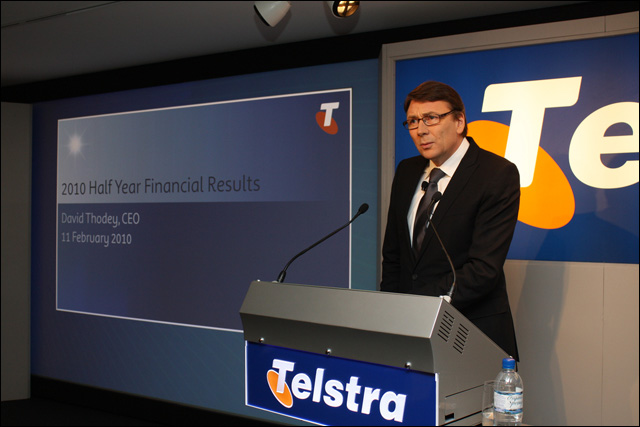news The nation’s largest telco Telstra has filed with the competition regulator a revised version of the Structural Separation Undertaking document which will provide a concrete path for it and the rest of the telecommunications industry to migrate over the next decade to the new National Broadband Network-based environment.
The SSU (and its accompanying Migration Plan) commits Telstra to full structural separation of its wholesale and retail business units by July 2018. In practice, this separation will take place through the progressive disconnection of fixed voice and broadband services on Telstra’s copper and HFC networks and migration of those services onto the NBN.
In addition, the SSU sets out the measures which Telstra will put in place to provide transparency in the supply of services to its wholesale customers during the NBN transition period over the next decade, as well as providing equivalence in the delivery of services — for example, allocating the same terms to rival ISPs such as Optus, iiNet, Internode and TPG as it does its own retail division, which typically operates under the ‘BigPond’ brand.
The Migration Plan, in turn, sets out the process which Telstra will follow when disconnecting customers from its copper network during the transition to the NBN (but not the process of connecting customers to the NBN, which Telstra says is a matter for NBN Co and each individual ISP).
Telstra first filed the documents with the Australian Competition and Consumer Commision in early August this year. However they were knocked back by the regulator and heavily criticised by the industry, leading to a revised document being filed this morning.
In a statement, Telstra CEO David Thodey said the revised SSU was the result of “extensive and constructive consultation” with the regulator and industry since the first draft was lodged. “We have taken on board the feedback and we believe the revised SSU provides the interim arrangements the industry requires as it transitions to the structurally separated model provided by the NBN,” he said.
Telstra stipulated that although the changes that had been made to the document were important, they didn’t constitute “material change” that would require it to put the document to its shareholders for a vote again. Telstra and NBN Co have also agreed to extend the deadline date for the SSU to be approved, under their own arrangements. The full SSU document is available online in PDF form, as is an overview of the document which runs to 20 pages on its own.
In a separate statement (PDF), the ACCC noted the filing of the document. “The ACCC welcomes the substantial revisions and additional commitments that Telstra has made in order to address ACCC and industry concerns about equivalence and transparency,” said ACCC chairman Rod Sims.
However, Sims also noted that it had “become apparent” through the SSU and other processes that there were outstanding regulatory concerns in relation to wholesale ADSL broadband services. He noted that the ACCC was not giving “urgent consideration” to initiating a public inquiry into declaration (regulating more strongly) wholesale ADSL services under competition legislation. It is also currently finalising its inquiry into other areas such as wholesale line rental, local calling and PSTN originating access.
“Provided that the outstanding concerns around wholesale ADSL can be quickly resolved, the ACCC is otherwise minded to accept the undertaking, subject to any new issues of real substance or drafting matters arising in the course of this final round of consultation,” Sims said. The ACCC intends to invite comments from industry on Telstra’s revised undertaking and will issue a discussion paper shortly — with the consultation to close in mid-January and a final decision made on the document in February.
opinion/analysis
It looks like everyone involved in this labyrinthine process wants to get it done as soon as possible. Although the ACCC isn’t ceding its control over the whole shebang, I would say that it is rushing as much as a cold-blooded regulator can rush. Everyone wants this thing done so the industry can move forward. And the quicker it’s done, the better.
Image credit: Telstra


I agree the faster this thing is finalised the better, i feel the longer it goes on the more noise the coalition will make about it
Comments are closed.